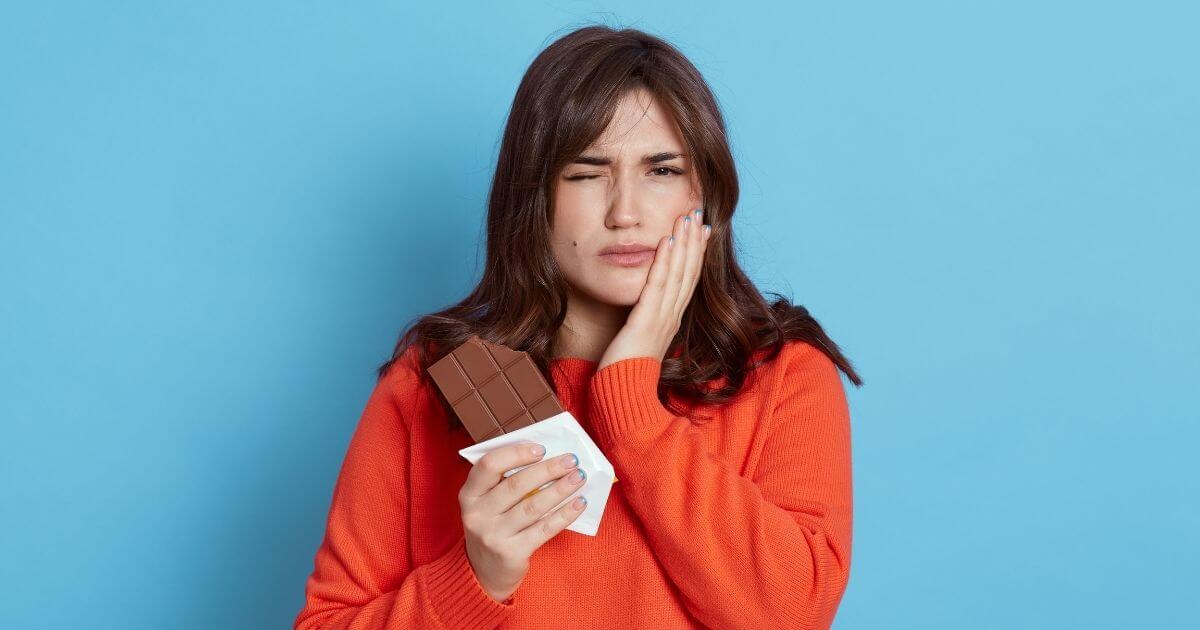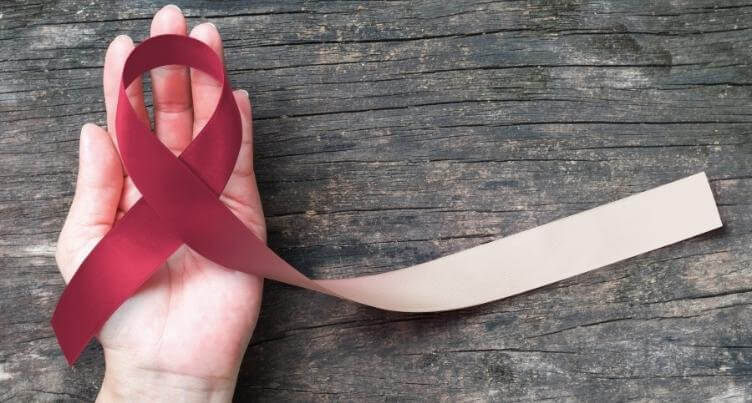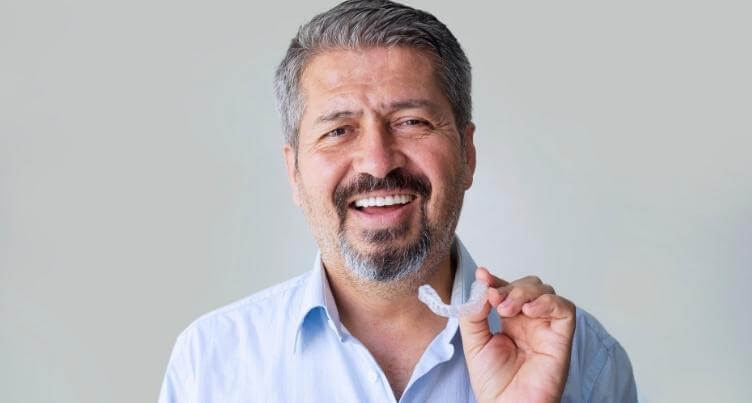The Dangers of Sugar on Your Health

It may be sweet, but the effects that sugar can have on your body and teeth sure aren’t.
Sugar can be found in all carbohydrates, even in foods that aren’t inherently sweet, like whole grains and vegetables. While consuming natural sugar in organic foods is okay–after all, they have essential [fiber] and minerals that the body needs–consuming too much added sugar is what can get you into trouble.
As your dentist, we care just as much about your oral health as we do your overall health. Here are some of the biggest ways consuming too much sugar can wreak havoc on your body.
Sugar and your heart: According to a 2014 study published in JAMA Internal Medicine, medical professionals concluded that people who consumed 17-21% of their daily calories from added sugar had a 38% increased risk of dying from heart disease.
Sugar and your teeth: Sugar that gets left behind on our teeth can damage enamel, which the body can’t repair. More so, with sugar comes bacteria that may lead to things like gingivitis and gum disease. As gums recede, teeth can become loose and unstable, and eventually may even fall out.
Sugar and your liver: While your liver needs some sugar to help make fat, too much refined sugar or high-fructose corn syrup may lead to a fatty buildup that can become liver disease. Some studies even show that eating too much sugar can be just as damaging to your liver as alcohol consumption.
Has sugar left you with cavities or tooth decay? Contact a dentist today to book an appointment.
Read also
What Does Your Tongue Say About Your Health?

Some people say the eyes are the gateway to the soul. At [PRACTICE NAME], we have another version of that: The tongue tells all about your health!
Your tongue helps you speak, swallow food, taste, and so much more. It can also show signs and symptoms of certain problems in the body.
Have you noticed any of these issues on your tongue?
Overly red tongue: This is commonly associated with a deficiency in vitamins like folic acid and B-12. It’s a good idea to speak with your doctor before beginning any new supplements to determine if it’s right for you.
Sore tongue: Is your tongue feeling sore or sensitive? Sometimes, this can be the result of a newly forming mouth ulcer or a food allergy.
White patches: Also known as leukoplakia, white spots can appear when the tongue has been irritated. One common culprit is tobacco use.
Red bumps: If you’ve ever been sick with a fever, you may have noticed red bumps appearing on your tongue. If they don’t clear up when the illness and fever subsides, consider booking a visit with our dentist.
Hairy tongue: While this doesn’t mean your tongue actually sprouts hair, it does mean that protein build-up can cause a hair-like appearance on the tongue. If you experience this, make sure to brush your tongue daily and consider purchasing a tongue scraper for extra cleaning.
If you suspect an issue with your tongue, book a visit with us. We’re happy to help identify the root cause or point you in the right direction.
Read also
6 Things to Do Before Getting Braces

Whether a teen or an adult seeking orthodontic treatment, one thing is clear: The stigma around getting braces is a thing of the past. Nowadays, people look forward to achieving a straighter smile in no time. As your partner in oral health, we can’t wait to help you achieve a stunning smile!
Whether you’re looking into traditional braces with metal wires or clear aligners, here are a few things you can do to prepare before your treatment begins.
- You might need to get other necessary dental work done before beginning your braces treatment. Commonly, wisdom teeth need to be removed so they don’t interfere with alignment.
- If you’re beginning treatment with traditional braces, getting used to eating can be a challenge. Adjusting your diet beforehand is a great way to prepare. Sticky foods like candies or hard foods like apples tend to get stuck in braces. While you can still consume these foods, it’s a good idea to know what to expect. Individuals opting for clear aligners don’t have to worry about food sticking to their aligners as they’re removed before eating.
- If you’re an athlete, you’ll want to get a mouth guard to protect your teeth during sports. Patients with traditional braces can be more prone to lacerations on the inside of their mouth should they sustain a blow to the head.
- Get your appointments with us booked in advance. Throughout your care plan, we’ll want to see you in the practice to make sure things are progressing properly. We’ll help book times that are convenient for you to stop in for quick visits.
- When traditional metal wires are tightened during the course of orthodontic treatment, patients may notice some soreness or discomfort for the first couple of days. The same thing is true for patients swapping out their clear aligners for the next one in the series. For this reason, it’s a good idea to have over-the-counter pain medication on hand.
- Take a selfie! We know you’ll love seeing your before and after photos, which we’ll take in the practice.
You’re well on your way to getting the straighter smile of your dreams. If you have additional questions, we’d love to hear from you. Contact us at [PRACTICE PHONE] today.
Read also
Love Coffee? Here’s How to Keep Your Teeth White

Love coffee? We don’t blame you. There’s just something about brewing a fresh, hot cup in the morning that makes getting out of bed a little easier.
But even things we love have their downfalls. Coffee may be great for putting extra pep in your step, but it’s not so nice to your teeth. In fact, if you drink too much coffee, you’ve likely noticed that your teeth aren’t as bright as they used to be.
That’s because coffee is full of tannins, which contributes to the taste and is also responsible for staining teeth. In fact, tannins are sometimes used in dyes for linen and cotton, so it’s no wonder why they’re able to change the [color] of your pearly whites.
Here are a few tips for keeping your smile bright after a cup of java.
1. Brush your teeth or rinse your mouth after drinking coffee. This can help get rid of leftover tannins on your teeth.
2. Sip coffee through a straw. This helps keep the liquid from touching your front teeth, stopping stains from happening in the first place.
3. Use a whitening toothpaste designed to gently remove surface stains. At your next visit, feel free to ask us for a recommendation.
4. Contact us to schedule a whitening session. Just one visit to our practice can brighten your teeth several shades!
Have additional questions about teeth whitening? We’re here to address any concerns you have. Simply give our practice a call to learn more.
Read also
What Causes Sensitive Teeth?

Have you ever winced in pain after eating a spoonful of ice cream or while sipping a hot drink? If so, you’re not alone. In fact, millions of people around the world experience the same thing.
What’s to blame? Sensitive teeth. If you have sensitive teeth, here are a few common culprits and some ideas to help manage the issue.
Common Causes
Over time, sensitive teeth can come and go. Tooth sensitivity often happens when gums recede, exposing dentin on the roots of the teeth. Roots aren’t covered in enamel, which is what protects our teeth from feeling overly sensitive.
The enamel on the crown of our teeth can also erode over time, especially from these common causes:
- Brushing too hard
- Eating highly acidic food
- Abrasive toothpaste
- Grinding your teeth
- Bulimia
- Overusing whitening products
The good news? This type of tooth pain can be easily managed. First, you’ll want to book a visit with our practice so that we can evaluate your teeth and rule out other common causes of tooth pain, like cavities, decay or infection. We’ll likely recommend a desensitize[z]ink toothpaste that you can use daily to brush your teeth.
To help reduce tooth sensitivity, you can also make dietary changes, including limiting foods high in sugar like juices or sweet treats.
In severe cases of sensitivity, fillings, gum grafts or a root canal may be needed.
If you have sensitive teeth, reach out to our practice today.
Read also
Do You Know the Signs and Symptoms of Oral Cancer?

A lip or mouth sore that doesn’t heal. A white or reddish patch on the inside of your mouth. Ear or mouth pain. Difficulty swallowing. These are some symptoms that could indicate oral cancer.
The Importance of Regular Dental Checkups
Consider us as your partner in the fight against oral cancer. During your regular dental visits, we’ll check for any signs of oral cancer by looking for suspicious spots and feeling for lumps in and around your mouth.
We may also inspect the roof of your mouth, inside your cheeks, under your tongue, and other areas of your head and neck. Oral cancer may also appear as red or white patches on the gums, tonsils, or the lining of the mouth.
Risk Factors
Some of the most common factors known to increase your risk of developing oral cancer:
Tobacco use. Smoking cigarettes, cigars, pipes, or chewing tobacco is one of the most well-known risks of oral cancer.
Consuming large amounts of alcohol. Heavy drinkers are more likely to be diagnosed with oral cancer. Those who use tobacco along with alcohol are at even greater risk.
Sun exposure. When you’re out in the sun, it’s important to use a lip balm that contains SPF, as sun exposure on your lips increases your risk of oral cancer.
How to Reduce Your Risk
The good news is that mouth cancers are among the most preventable types of cancers.
Here are some steps you can take to decrease your risk:
- Stop smoking and using any tobacco products
- Eat plenty of nutrient-dense fruits and vegetables
- Cut down on alcohol consumption
- Remove your dentures at night, and clean them each day
- Practice good oral health habits, such as brushing and flossing
While it’s impossible to fully prevent oral cancer, taking these steps can help decrease your chances of getting a diagnosis. Visiting your dentist regularly will help ensure that signs of oral cancer are found as early as possible.
Read also
Protect Your Teeth While You Sleep With a Night Guard

Do you often wake up with headaches or experience jaw pain? Have you been told that you grind your teeth? If you answered yes, you may benefit from wearing a night guard to protect your pearly whites. A night guard is a plastic retainer-like dental appliance that covers the biting surfaces and can be worn on either the bottom or top set of teeth.
4 Benefits of Night Guards
#1. Prevents tooth damage
Wearing a night guard ensures your top teeth and bottom teeth don’t make contact while you sleep. Teeth grinding is common and can wreak havoc on your teeth.
Grinding causes teeth to lose enamel, which results in overly sensitive teeth. Other problems associated with grinding include damage to fillings. Teeth can also chip or break if you grind your teeth hard enough.
#2. Reduces jaw tension and pain
Another common thing people do in their sleep is clench their jaw. Wearing a dental night guard decreases both jaw tension and pain caused by TMD.
#3. Prevents headaches
If you routinely wake up with headaches, you might be grinding your teeth and clenching your jaw shut in your sleep. This action can cause jaw pain and earaches, neck pain and muscle fatigue. A custom-made night guard can help prevent these issues.
#4. Inhibits snoring
When your jaw is clenched, you can experience breathing problems, which can lead to snoring. Wearing a night guard keeps your top and bottom jaws from touching. By keeping your jaws separate, there’s an increase in the amount of air you can breathe in while you sleep. This increase in air improves your breathing and reduces snoring.
Over-the-Counter vs Custom
While relatively inexpensive, OTC night guards are pre-molded to fit any mouth. The long-term use of such devices causes your bite to shift, as they have not been specifically made for the shape of your teeth.
We can create a night guard that’s custom-fitted and more comfortable than one you’d purchase at a store. When taken care of properly, a professionally crafted night guard can last many years.
Take that first step toward safeguarding your smile with a custom-crafted night guard. Reach out to us!
Read also
How to Avoid These Gradually Forming ‘G’ Conditions

Red, swollen gums. Bad breath. Sensitive teeth. If you’re experiencing any of these, you may have periodontal or gum disease. This inflammatory condition affects the soft and hard structures that support the teeth. According to estimates from the Centers for Disease Control and Prevention, nearly half (47.2%) of American adults have mild to severe periodontal disease.
What Causes Periodontal Disease?
Gum disease is caused by a buildup of plaque and tartar on your teeth, which attract harmful bacteria. The condition develops gradually over time and can be prevented by practicing scrupulous oral hygiene habits and seeing your dentist for routine dental exams. If left untreated, gum disease can lead to bone loss, chronic bad breath (halitosis), and permanent tooth loss.
How to Prevent It
Brush for 2 minutes, twice a day; floss at least once a day; and stay on top of your preventive dental visits.
The ‘Silent Thief of Sight’
Referred to as the “silent thief of sight,” glaucoma consists of a group of disorders that cause slow and irreversible loss of vision that can lead to blindness. According to the Glaucoma Research Foundation, OAG is the most common form of glaucoma, accounting for 90% of all glaucoma cases.
Our eyes have small drainage canals that assist in regulating our eye pressure. OAG occurs when fluid drains too slowly from the eye and results in pressure building up. If OAG isn’t treated, it can lead to blindness. Like periodontal disease, OAG develops gradually over time and can be prevented with routine eye exams.
Other tips for preventing glaucoma include wearing eye protection and being aware of your family’s medical history.
Read also
Why Do Our Teeth Get Stained?

A gleaming bright smile is one of the best accessories anyone can possess. But what if your dentition looks dingy? There are many reasons why your pearly whites may have a dull appearance.
Top Causes of Staining
Here are a few reasons for tooth disc[o]loration:
- Food
- Drinks
- Smoking and other tobacco use
- Stain-causing particles within the tooth enamel
- Aging
Frequently Asked Questions
How can I prevent teeth staining?
Fortunately, it’s easy to keep your teeth from getting stained. Avoid certain foods and drinks that stain your teeth, quit smoking, and maintain a good oral care routine. Your regimen should include brushing your teeth twice daily, rinsing with mouthwash and flossing once a day. Consider chewing sugar-free gum between meals, and be sure you see your dentist at least twice a year.
What foods stain your teeth?
Foods that are bright or vivid in col[o]r are the most likely to stain your teeth. Red pasta sauces, berries (particularly blueberries and raspberries), soy sauce and balsamic vinegar, all can contribute to teeth staining. If you want to enjoy these foods, be sure to rinse your mouth with water afterward to prevent the staining properties from taking hold.
What drinks cause teeth staining?
Like foods, drinks with dark or bold col[o]rs such as colas and coffee, are most likely to cause teeth staining. It’s also a good idea to avoid red wines and tea. Daily consumption of these drinks can darken your smile.
Do braces stain your teeth?
After braces are removed, sometimes mild stains are visible. However, it’s not the braces that create the stains. Rather, it’s the way the teeth were taken care of while the braces were on. Follow the other suggestions for stain prevention, and avoid using whitening products while wearing braces. That’s so you don’t over-whiten the area of your teeth that surround the brackets.
Are all types of tooth stains reversible?
There are three primary ways teeth become stained: surface stains; under the surface stains; and age-related stains. All three can benefit from different teeth whitening processes.
If you’d like a brighter, whiter smile that exudes confidence, ask your dentist about effective whitening solutions that get optimal results.
